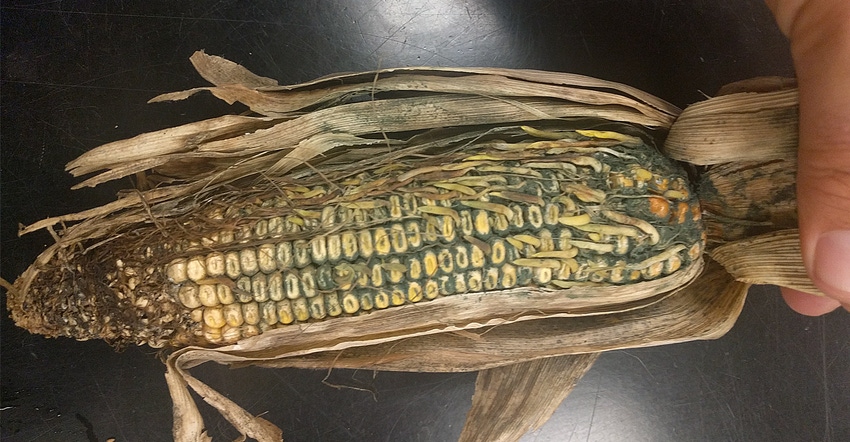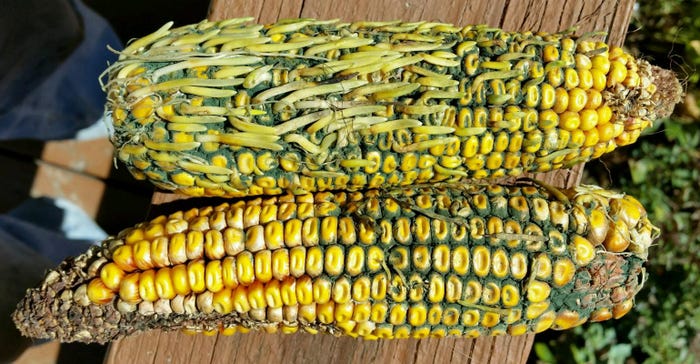October 8, 2018

By Chris Torres
Corn and soybean sprouting is popping up in lots of places this harvest season.
Robin Foor, executive director of the Bedford County Farm Service Agency office, says many farmers have been reporting mold on the tops and bottoms of ears, and some are even seeing sprouting in soybean pods.
Gary Groves, Pennsylvania state FSA director, says you can blame the sprouting problems on the rain.
"We've had several counties where there has been sprouting with corn and wheat," he says. "We're expecting more to come in on corn. It's worse than we've seen in recent years."
What is corn sprouting?
According to Greg Roth, professor of agronomy at Penn State, sprouted kernels can occur on the butt ends of corn ears, especially in hybrids that have the ears remaining upright during dry down. Water will accumulate at the bottom of the husk, which favors sprouting in that part of the ear.
Roth says sprouting can also occur on tip kernels where the ends have been exposed.
Sprouting can also occur in soybeans, he says, when soybean seeds drop below 50% moisture then go back up.
 CORN KILLER: Corn sprouting can lead to moldy corn, essentially destroying the crop.
CORN KILLER: Corn sprouting can lead to moldy corn, essentially destroying the crop.

In both cases, mold can spread, cutting down on yields and crop quality, and if sprouting is widespread enough, can lead to crop losses.
Dealing with sprouting
According to an article by Purdue University agronomy educator Bob Nielsen, sprouting can be dealt with in several ways:
• Timely harvest of severely affected fields.
• Drying grain at higher temperatures to prevent further growth.
• Screening grain prior to storage to reduce the amount of damaged grain and seedling tissues.
• Removing several loads from a full bin to reduce the concentration of broken corn or other materials that typically gather in the center during filling.
Filing a crop insurance claim
If you think you have enough acreage that's been affected by sprouting or there is lots of mold, you can file a crop insurance claim.
But the first step is to get your crop insurance agent involved, according to William Ferris, a Risk Management Agency specialist based in West Virginia.
"Get ahold of the agent and they will get ahold of an adjuster. They'll give you instructions on what to do with the crop," he says.
You May Also Like




